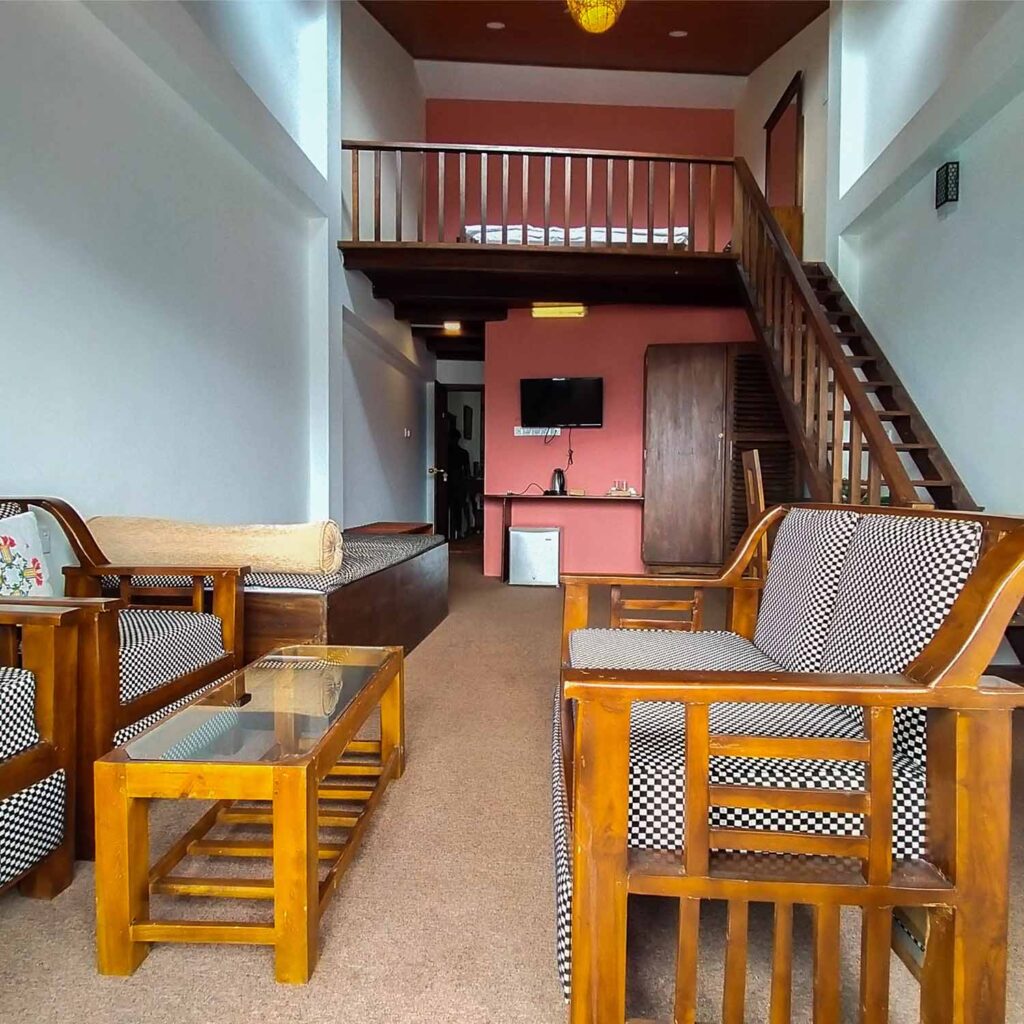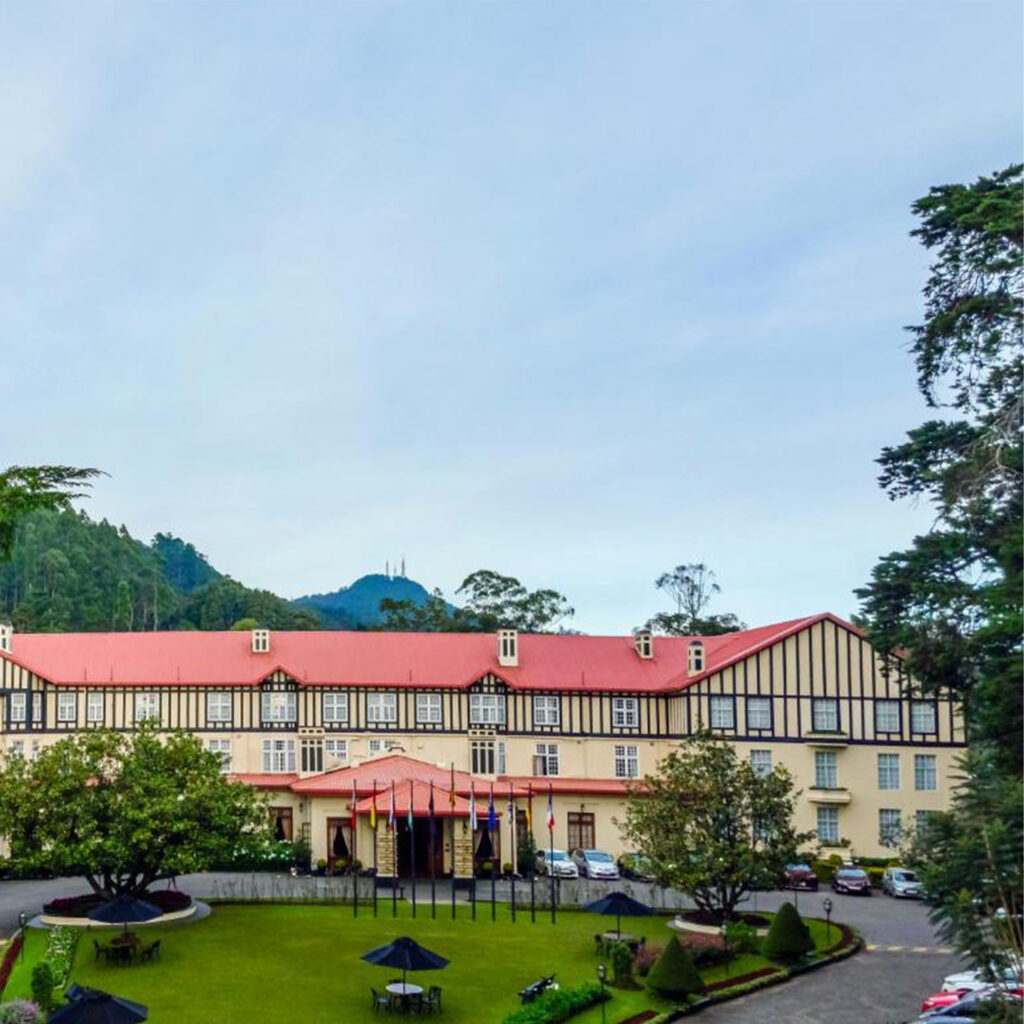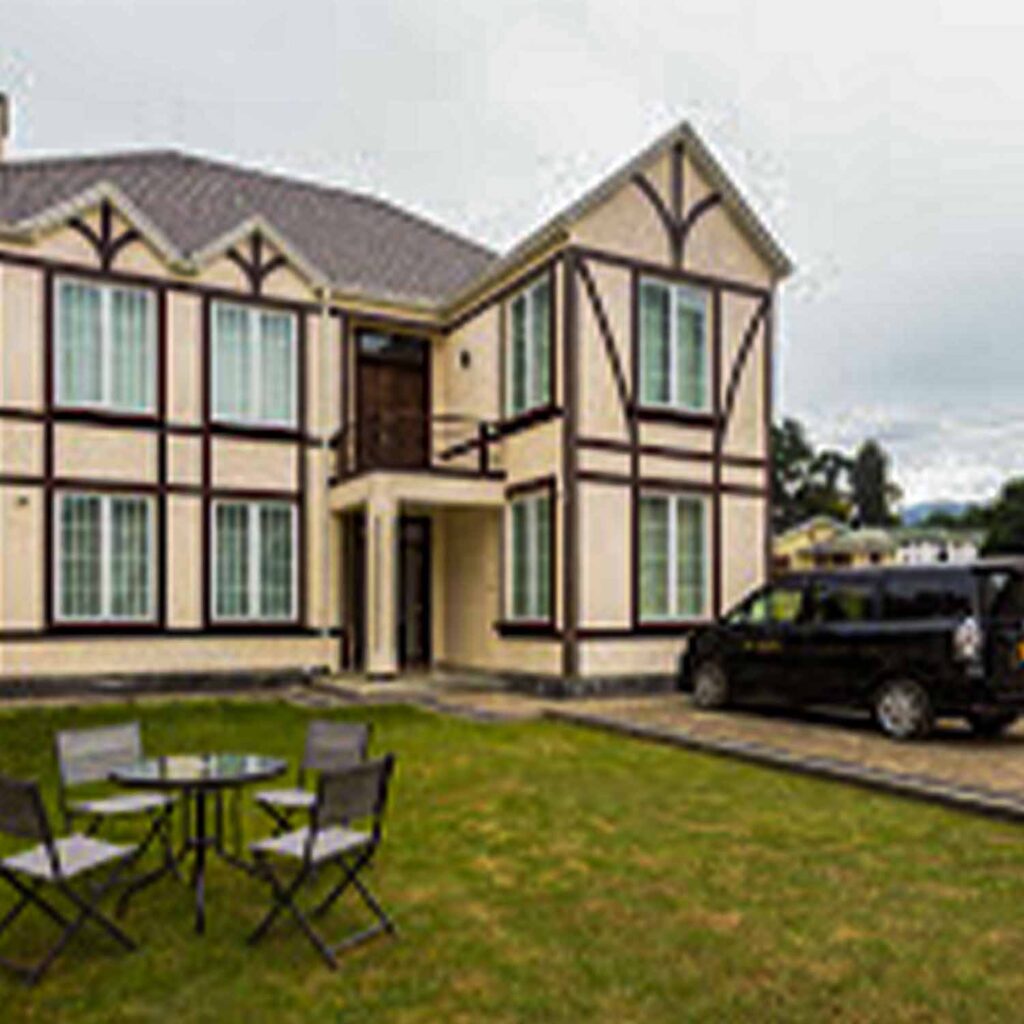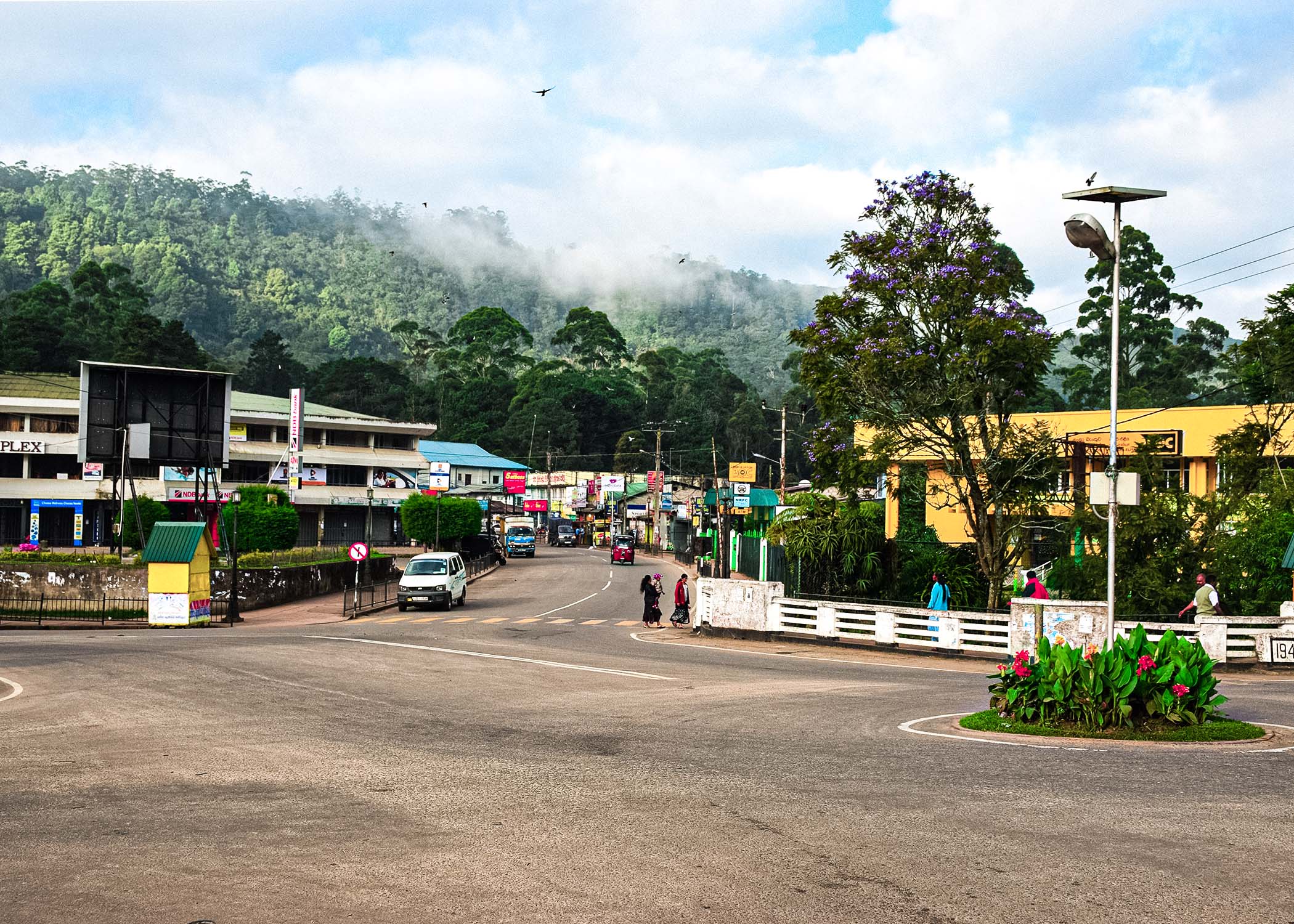
Nuwara Eliya Often referred to as ‘Little England’, with its colonial-era bungalows, British architectural hotels, pretty English-style gardens and cool climate give British-country-village feeling in the hill country of the Central Province, Sri Lanka. Its name means “city of light”. The city is the administrative capital of Nuwara Eliya District, with a picturesque landscape is at an altitude of 1,868 m (6,128 ft.) Due to the high altitude Nuwara Eliya has a much cooler climate than the other part of Sri Lanka, with a mean annual temperature of 16 °C. But it may come down to 3°C in December, January and February, sometimes there can be frost in late night. The city is overlooked by Piduruthalagala or Mount Pedro in English, the tallest mountain in Sri Lanka, at 2,524 m (8,281 ft.). Nuwara Eliya District is the most important location for high grown tea production in Sri Lanka.
History
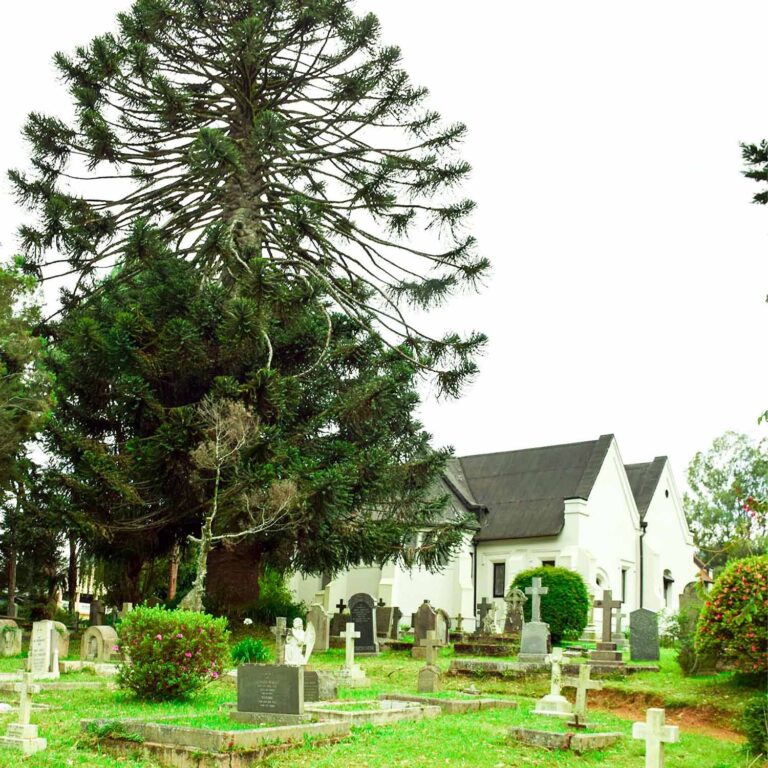
Hill country ever green forests lying in the shadow of Pidurutalagala protected by rulers of Sri Lanka as this is the most important catchment area. City of Nuwara Eliya became a British creation, having been ‘discovered’ accidently while hunting out by colonial officer Dr. John Davy in 1819 and chosen as the site for a sanatorium a decade later. Sir Edward Barnes, governor from 1824 to 1831 built his home known as “Barnes Hall” which is today called the Grand Hotel. In 1838 Samuel Baker, an explorer, discovered Nuwara Eliya as a place with the similar climate of England much suitable for European vegetable cultivation and initiated it at Magasthota Baker’s Farm. In recognition of his work at Nuwara Eliya the broadest water fall in Nuwara Eliya was named after him and is called “Bakers Falls’. Later the district became a spot where ‘English’ vegetables and fruits such as lettuce and strawberries could be successfully grown for consumption by the colonists. Coffee was one of the first crops grown there, but after the island’s coffee plantations failed due to disease, the colonists switched to tea. In 1872, Sir William Gregory became the governor of Sri Lanka and further developed Nuwara Eliya to a place of beauty and a typical English climate and atmosphere and was instrumental in building Lake from a swamp in the center of the city to what is today known as Gregory Lake. In 1877 Sir Robert London became the Governor, who was instrumental in building the railway track from Peradeniya to Nawalapitiya and then from there to Hatton and Nanu Oya. Ethnic composition in Nuwara Eliya district changed after English planters brought Tamils from South India to work in tea plantation.
Historical landmarks
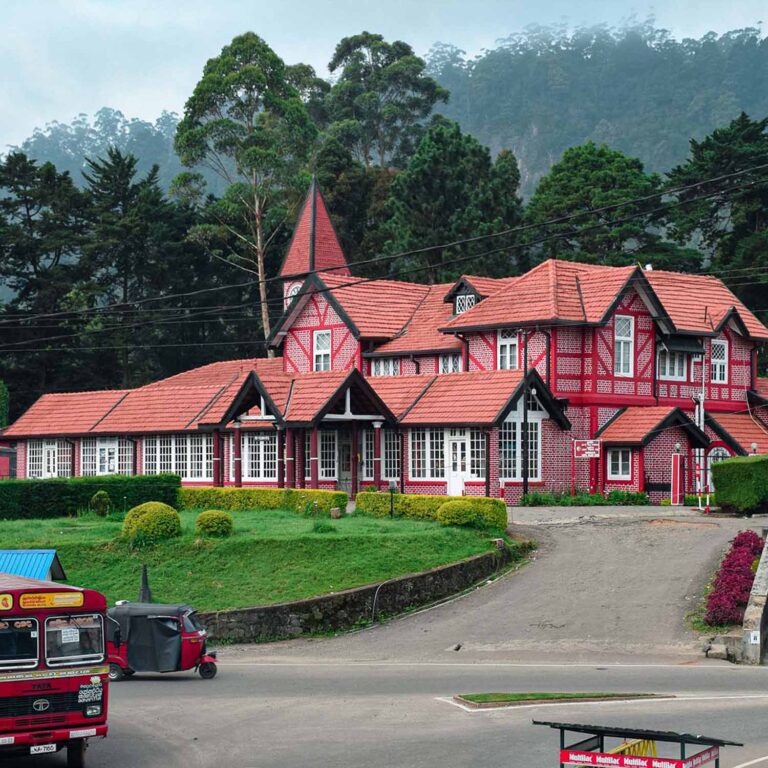
Nuwara Eliya post office located in the center of Nuwara Eliya and is one of the oldest post offices in Sri Lanka which was built in 1894 by British according to the Tudor style. Two storied bright red brick wall and pink colour roof tiled building with clock spire is one of the oldest building in Nuwara Eliya retains its colonial glamor. In 2012 the former quarters of the post mast was converted into accommodations for tourists. Visitor can purchase some of pretty postcard and post them to their notables at the same time from this post office.
Seetha Amman Temple is located 5 kilometers from Nuwara Eliya close to Hakgala Botanical Garden on the way to Badulla. . The temple is located in the village of Seetha Eliy (meaning light of cool). This place is believed to be the site where Sita was held captive by king Ravana, in the Hindu epic, Ramayana.[ On the rock face across the stream are circular depressions said to be the footprints of Hanuman. This is one of most sacred places in Sri Lanka for Indian Hindu pilgrims.
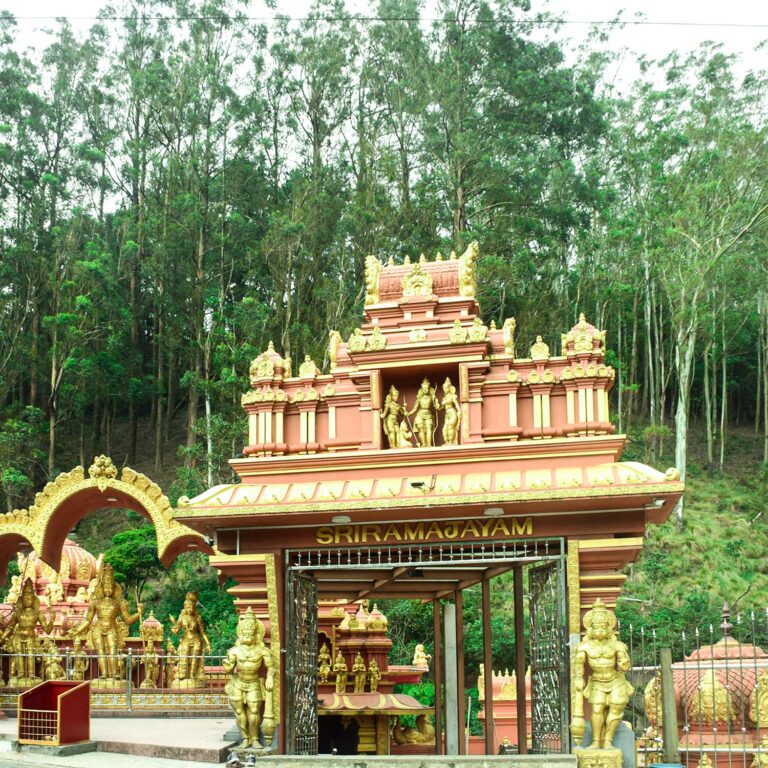

Construction of church started in 1845 and completed in 1852. In 1889 the church was enlarged. The original portion of the building is at the church’s western end. The additions can be noted by the difference in size of the corbels supporting the main rafters. On 18 April 1954 Queen Elizabeth II and Prince Philip, Duke of Edinburgh attended services at the Holy Trinity church, with the Queen gifting a blue carpet and a stained glass window in remembrance of their visit. here are a number of memorial plaques on the church walls including Dr. G. Gardner, Superintendent of the Royal Botanical Gardens, Peradeniya; Captain William Fisher, father of Lord John Fisher, who was thrown off his horse and killed; Reginald Beauchamp Down all, tea planter, Legislative Council member; and Lady Carolina Ridgeway, wife of Sir Joseph West Ridgeway, Governor of Ceylon.
The churchyard also several tombstones, including ones for Lady Olive Mary Caldecott, wife of Sir Andrew Caldecott, the last Governor of Ceylon, and the family members of Sir Samuel Baker.
Best places to stay
Hiking, Trekking and wildlife
Horton plains and world’s end

Horton plan is a plateau covered by montane grassland and cloud forest at an altitude of 2,100–2,300 meters (6,900–7,500 ft.) In Sinhala the plains are known as Maha Eliya Plains This was discovered by a planter, Thomas Farr in early 19th century and named Horton plans in 1843 in honor of then Governor of Ceylon. This popular tourist destination for nature lovers, wildlife photographers, adventure hikers and researchers is situated 8 kilometers from Ohiya railway station, 6 kilometers from the world-famous Ohiya Gap/Dondra Watch and 32 kilometers from Nuwara Eliya. Pattipola railway station, New Zealand farm, Kande ela lake and Ambewela are other important places pass by the way to Horton plan from Nuwara Eliya.
The Horton Plains are the headwaters of three Sri Lankan rivers, the longest river of the country-Mahaweli, and two major rivers Kelani, and Walawe. Horton Plains is bounded by the country’s second and third highest mountain peaks of Sri Lanka: Mount Kirigalpotta (2389 m) and Mount Thotupola Kanda (2357 m).
Horton plan is rich in biodiversity and many species found here are endemic to the region. Large herds of Sri Lankan sambar deer feature as typical mammals and the other mammals in the park are Strip-neck mongoose, long-tailed giant squirrel, wild boar, bear monkey, toque monkey fishing cat, otter and some more. The park is also an Important Bird Area with many species not only endemic to Sri Lanka but restricted to the Horton Plains Among them are Sri Lanka bush warbler, Dull-Blue flycatcher, Sri Lanka whistling thrush and the yellow-eared bulbul, Sri Lanka Wood Pigeon, Sri Lanka White-eye, Spot-winged Thrush, Dull-blue Flycatcher, Sri Lanka Bush Warbler, Scaly Thrush, Sri Lanka Whistling Thrush, Brown-capped Babbler, Sri Lanka Spur-fowl and Sri Lanka Jungle-fowl. Other highlights are the Himalayan migrants Pied Thrush, Kashmir Flycatcher & Indian Pitta. Black Bird, Mountain Hawk Eagle, Black Eagle, Jerdon’s Baza, Pied Bush chat, Hill Swallow and Hill Myna commonly found.
The average annual temperature is 14-16⁰C while the humidity is relatively low at 65%. Though annual rainfall of the highlands is about 2540mm but it may increase to more than 5000mm. Best time to visit Horton place is dry season (January to May) but should not miss even if you travel in other season to Sri Lanka.
9 km main circular track begins from visitor’s centre which also has the Horton plan museum. On the southern edge of the Horton Plains at an altitude of 2140m is famous World’s End, which drops straight down about 900 Meters, with a magnificent view. From World’s End, the trek turns off to inland and there is another lovely attraction, Baker’s falls.
Kirigalpotta is the 2nd tallest mountain in Sri Lanka at 2,388 m (7,835 ft) above mean sea level, after Pidurutalagala. Kirigalpoththa is the highest point in the Horton Plains National Park This 7 KM trail (14 up and down) will take around 5 – 6 hours of trekking, hiking & hillwalking adventures. Attempting Kirigalpoththa is for the daring adventurers only as the conditions can be treacherous due to the difficulty of the terrain and weather.
Kirigalpotta mountain
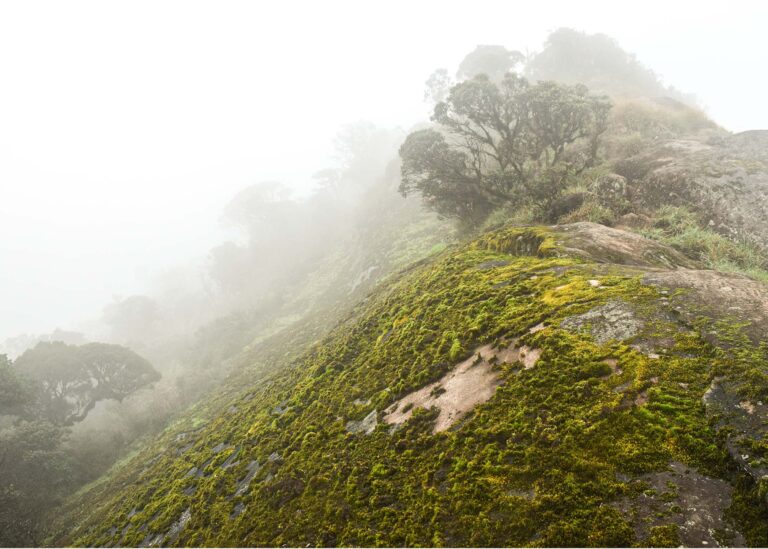
Piduruthalagala Mountain
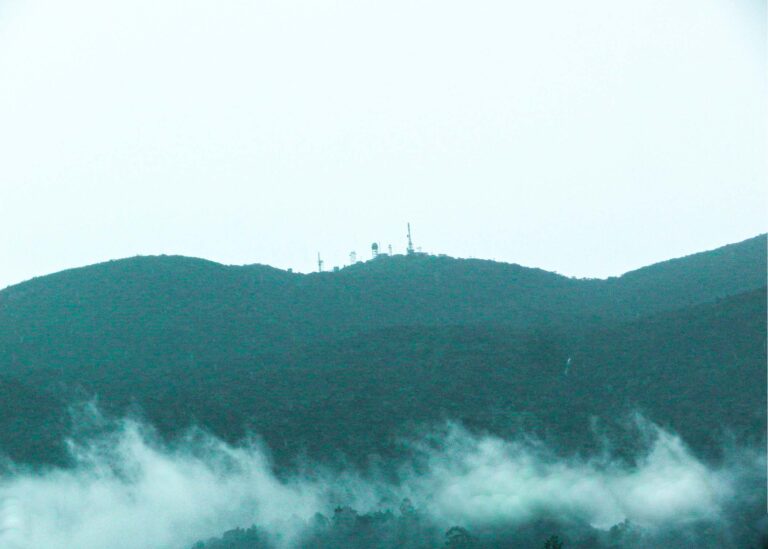
Pidurutalagala or Mount Pedro in English is an ultra prominent peak, and the tallest mountain in Sri Lanka, at 2,524 m (8,281 ft). It is situated North-North-East from the town of Nuwara Eliya, Its summit is home to the central communications array of the Government of Sri Lanka and armed forces, and serves as an important point in the country’s radar system. So there are some limitations to general public to enter the highest point of Sri Lanka, you can reach there by a vehicle in day time only.
Single Tree Mountain is the 7th tallest mountain of Sri Lanka at 6890 ft. above mean sea level and takes about 90 minutes to reach the top. Single Tree hill is the best vantage point to observe the beauty of Nuwara Eliya which gives an amazing view of the city below where you could captivate the beauty of the Hakgala Mountain range, Pidurutalagala range, Lake Gregory and if whether permits Adam’s peak also. The track, after the top of the hill is passing through tea plantation and montane forest to reach Sri Lanka’s highest village, “Shanthipura” with an elevation of 2034 meters. The observation point at Shanthipura will provide you yet another bird’s eye view of City of Nuwara Eliya.
Single Tree Mountain
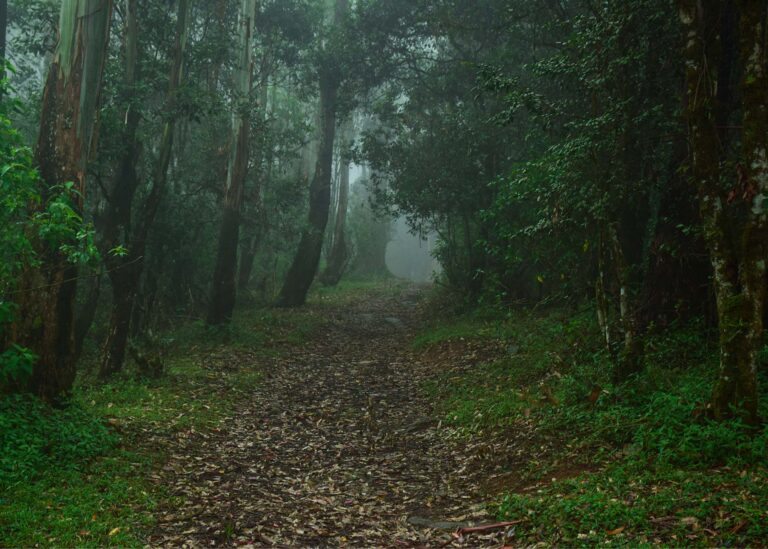
Galway’s land National Park
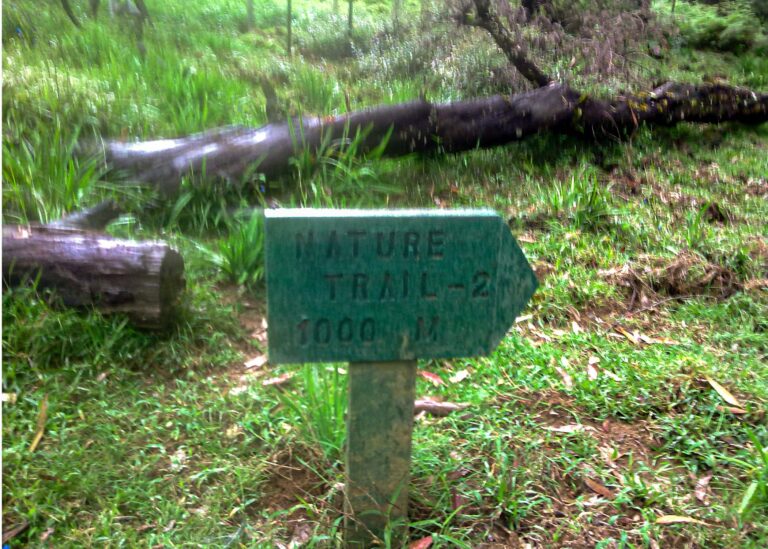
Galway’s Land National Park is one of the smallest (27 ha) and newest (18th May 2006) national parks situated within the city limits of Nuwara Eliya. The park was declared to conserve the montane ecosystems. Galway’s Land harbours about 20 rare migrant bird species and 30 native species and some mammals like buffalo, wild boar, barking deer.
Entertainments and relaxation
Victoria Park
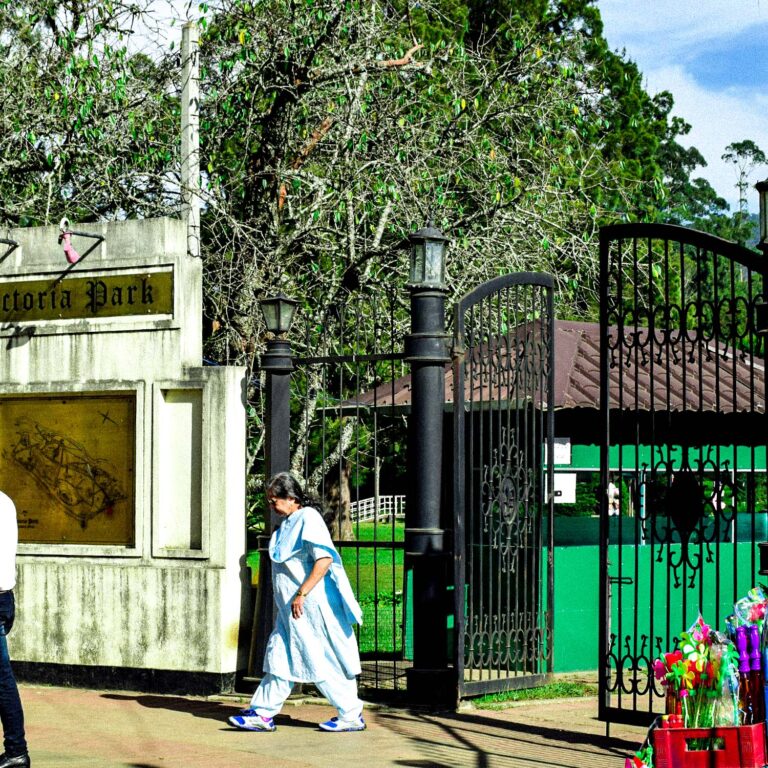
Victoria Park is an attractive, and best-maintained, town park located, opposite to the Nuwara Eliya Post Office
The park was named in 1897 to commemorate Queen Victoria’s Diamond Jubilee of coronation. The Nanu Oya River runs through the park, creating a number of small lakes. It’s also home to quite a number of hill-country bird species, including the Kashmir flycatcher, Indian pitta and grey tit. At the far end of the park is a small children’s playground and miniature railway. With the full bloom of flowers the park comes alive around March to May, and August and September.
Gregory Lake is a reservoir in heart of the Nuwara Eliya, Sri Lanka. Lake Gregory was constructed during the period of British Governor Sir William Gregory in 1873 by damming of the Thalagala stream, which originates from Mount Pidurutalagala to convert the area to a lake which was originally a swampy bog at the foot of the small hills that border the town. With new development of Gregory lake area, this prominent attraction is used for water sports and recreational activities. Lake Park, Boat Rides are available. A plenty of street food stalls located in a separate area where one can enjoy a meal or a snack. Sea planes are landed here especially in tourist seasons.
Gregory Lake
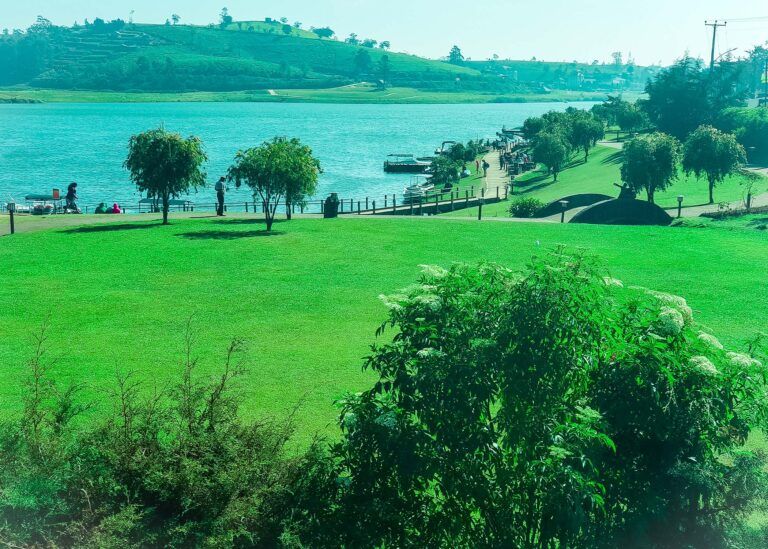
Kande ela Lake
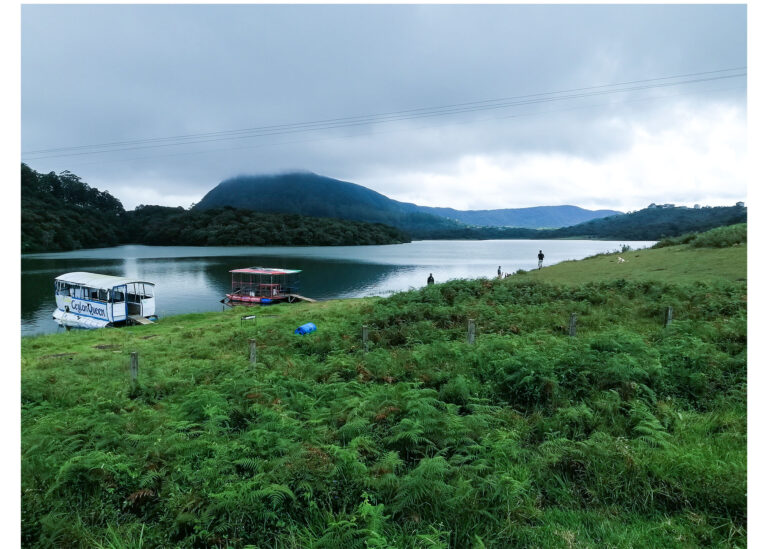
Kande Ela lake is a serene lake surrounded by hills from one side and the Hakgala Strict Nature Reserve from the other side on the route to Horton plan from Nuwara Eliya. This reservoir was built in 1947-49 by Hon D.S. Senanayake, first Prime Minister of Sri Lanka and was opened in 1950 Water of this reservoir is used primarily for supply drinking water to the area. Therefore, no engine powered boats allowed, and manual boats can be hired to ride on this water.
Not to miss – Waterfalls
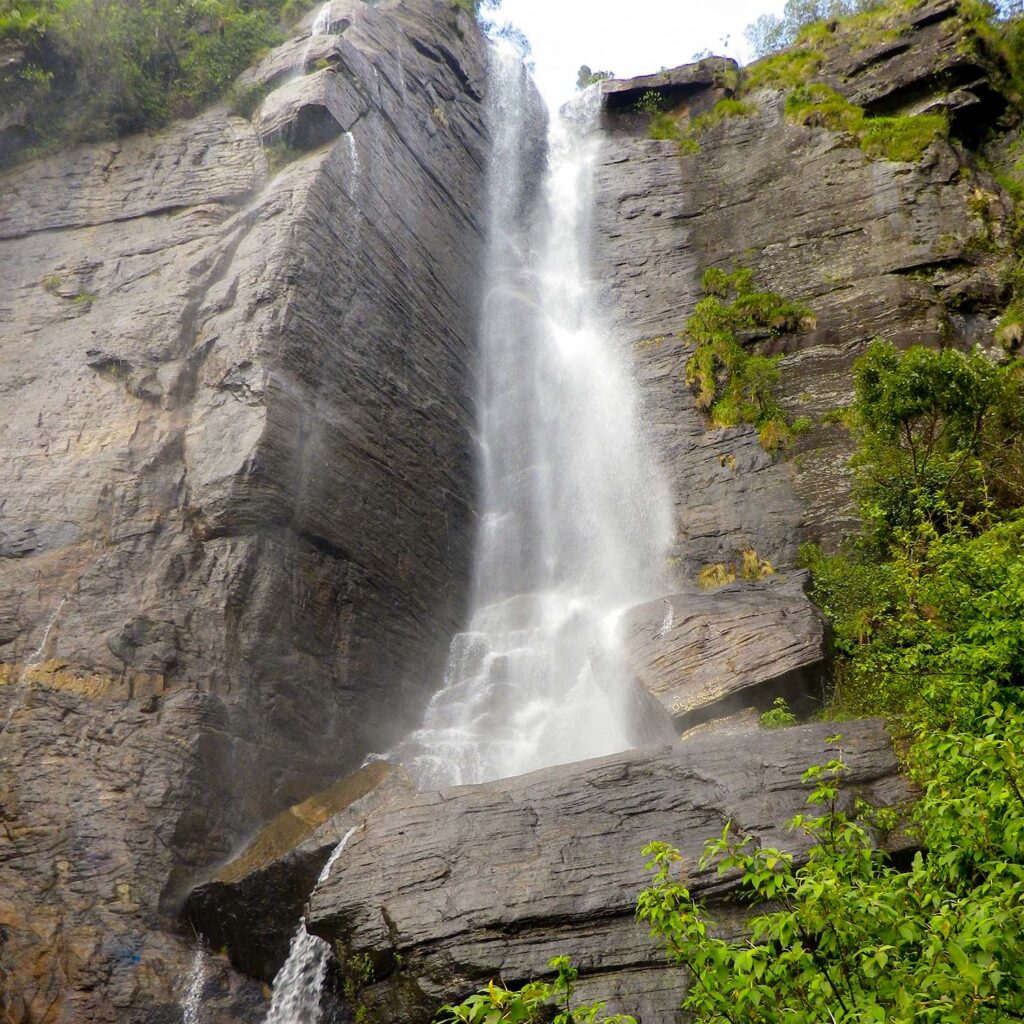


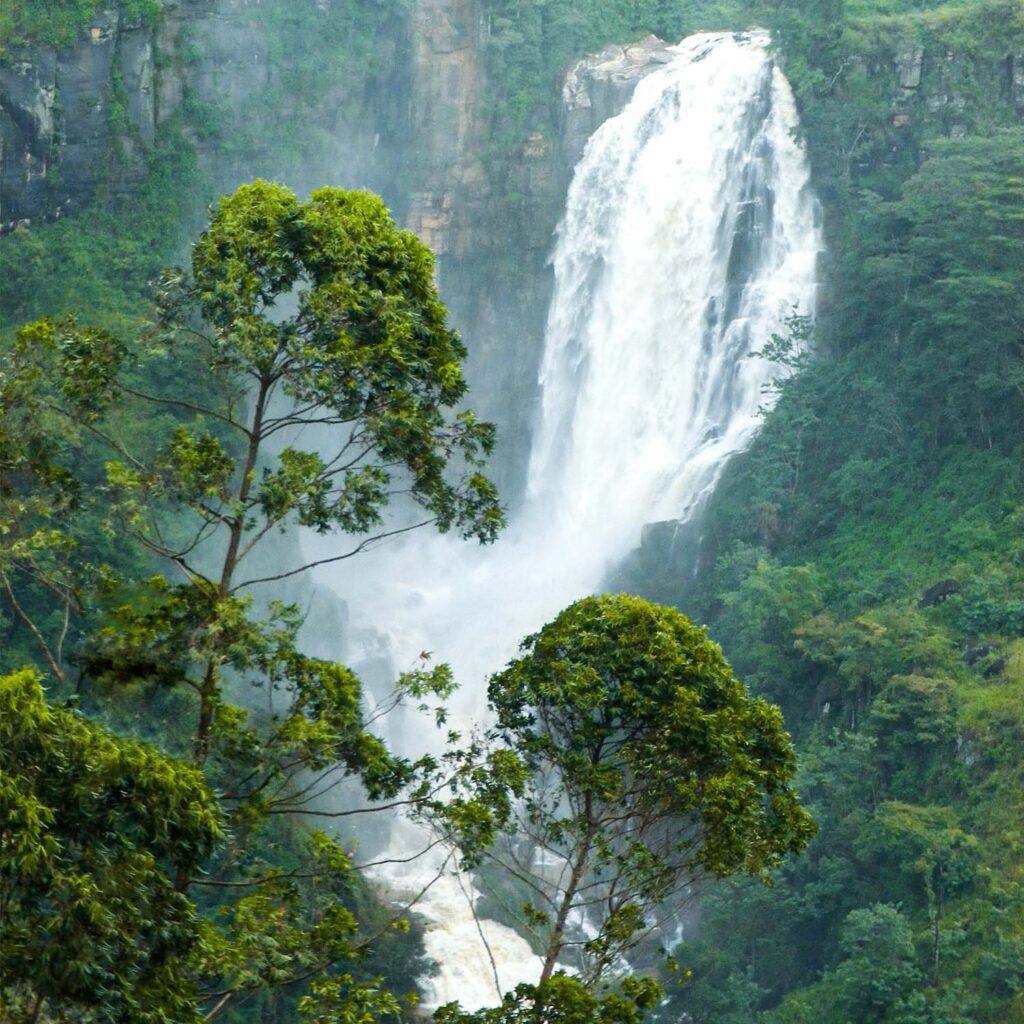
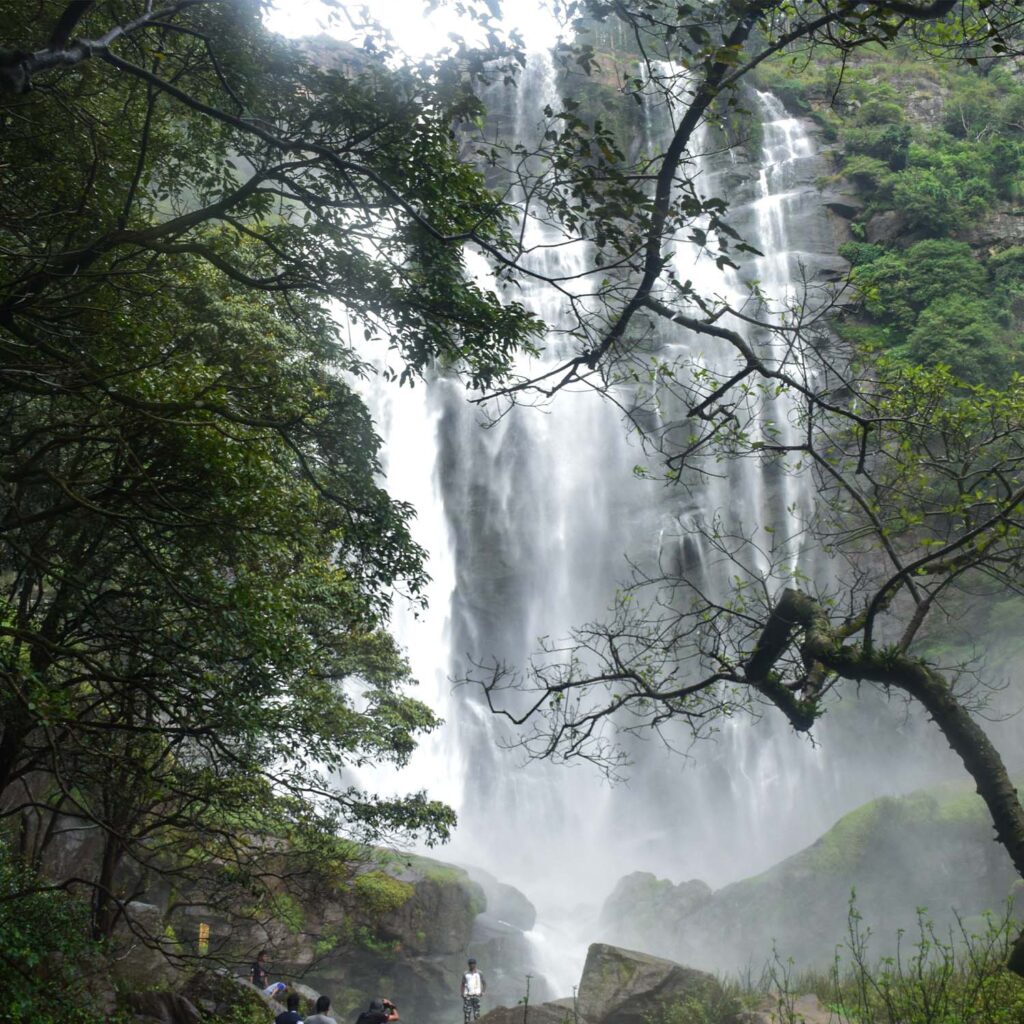
Grate waterfall 3km away from Nuwara Eliya city at HawaEliya ( 15 minute walk or 5 minute by Tuk Tuk) This Beautiful 30 m high waterfall brooks of Sri Lanka’s highest mountain, the Piduruthalagala It flows over hard granite ledges. There are two routes to reach this place one route start from Nuwara Eliya – Ragala road just opposite to Prdro tea factory and go through the tea plantation and reach the tea manager’s bungalow along a dirt road. Visitors can reach this destination by following the signs that are there and eventually one can reach a rock face and a Shiva shrine. Other route start from the Lady Mcalams Road just behind the General Hospital Nuwara eliya.
Glen Falls originates from the northern side of ‘Single Tree Hill’ (with an altitude of 2070m) Due to the excessive and illegal clearing at the top of the Single Tree Hill and use the water for cultivation on the top of the hill, this perennial waterfall dried up in the early 1990’s and turned in to a seasonal fall. The waterfall can be observed during and just after heavy rains to Nuwara Eliya. It is easily accessible as this waterfall is only at a walking distance from the city centre closed to Manudi Glenfallsedge rest.
St. Clair’s Falls, commonly known as the “Little Niagara of Sri Lanka” is one of six waterfalls affected by the Upper Kotmale Hydropower Project. Water fall lost much of its’ beauty ofter the project. The falls are situated 3 kilometres west of the town of Talawakele on the Hatton-Talawakele Highway in Nuwara Eliya District.
The falls are located along the Kotmale Oya, a tributary of the Mahaweli River, as it cascades over three rock outcrops into a large pool,running through a tea estate, from which the falls derive their name from. The waterfalls consist of two falls called “Maha Ella” (meaning “The Greater Fall”), which is 80 m high and 50 m. wide and “Kuda Ella”, (meaning “The Lesser Fall”), which is 50m high and located immediately downstream of the main fall. St Clair’s falls are the 20th highest waterfall in Sri Lanka.
known as the ‘Veil of the Valley’, is one of the most beautiful waterfalls in Sri Lanka, situated 6 km (3.7 mi) west of Talawakele, Nuwara Eliya District on the A7 highway ( road to Nuwara Eliya from Colombo through Awissawlla and Hatton. The waterfall is 97 m (318 ft) high and is the 19th highest in the country. The falls are formed by a tributary of Kothmale Oya, which is a tributary of Mahaweli River. The elevation of Devon Falls is 1,140 m (3,740 ft) above sea level.
Bomburu Ella is the widest waterfall in Sri Lanka It is located near the border of Nuwara Eliya and Badulla districts, approximately 15 km from Welimada town. It consists of several small waterfalls grouped together. The source of the falls is a lake located in Nuwara Eliya.
How to get in
Transportation from Bandaranaike International Airport to Nuwara Eliya
- Private Vehicle Transfer:
Upon arrival at Bandaranaike International Airport (CMB), one of the most convenient and comfortable ways to reach Nuwara Eliya is by hiring a private vehicle or taxi. This option allows you to have a personalized travel experience, with the freedom to stop at scenic spots along the way. The journey from the airport to Nuwara Eliya takes approximately 4-5 hours, depending on traffic conditions and weather.
Advantages:
- Comfort and convenience: You can relax in the privacy of your own vehicle.
- Customizable itinerary: You have the flexibility to plan stops and detours.
- Direct route: The driver will take you directly to your destination without any other stops.
- Scenic Train Ride:
If you seek a unique and picturesque experience, consider taking a train from Colombo Fort Railway Station to Nanu Oya, the nearest railway station to Nuwara Eliya. The train ride offers stunning views of tea plantations, rolling hills, and cascading waterfalls.
To reach the Colombo Fort Railway Station from the airport, you can take a taxi or hire an airport transfer service. Trains to Nuwara Eliya run several times a day, and the journey takes approximately 6-7 hours. While the duration is longer compared to other options, the breathtaking scenery makes it an unforgettable adventure.
Advantages:
- Scenic journey: The train ride offers some of the most stunning vistas in Sri Lanka.
- Authentic experience: Interact with locals and immerse yourself in the country’s culture.
- Budget-friendly: Train tickets are more economical compared to private transfers.
- Public Buses:
For budget-conscious travelers, public buses are a cost-effective option to reach Nuwara Eliya from the airport. From the airport, you can take a taxi or a shuttle service to Colombo’s Central Bus Stand (Pettah Bus Stand). Buses to Nuwara Eliya depart frequently from here.
The journey by bus takes approximately 6-7 hours, and the buses range from regular to semi-luxury, with varying levels of comfort. While this option may not offer the same level of convenience as private transfers, it allows you to experience Sri Lanka like a local.
Advantages:
- Affordable: Buses are the most budget-friendly option.
- Cultural experience: Travel alongside locals and get a taste of everyday life.
- Frequent departures: Buses to Nuwara Eliya run regularly throughout the day.
Whichever transportation mode you choose, your journey to Nuwara Eliya promises to be an adventure filled with breathtaking vistas and memorable experiences. Whether you prefer the comfort of a private vehicle, the scenic train ride, or the budget-friendliness of public buses, each option offers its unique charm.
Before making your choice, consider your budget, travel preferences, and time constraints. Regardless of the mode of transportation, your destination, Nuwara Eliya, awaits with its picturesque landscapes, lush tea plantations, and welcoming atmosphere. Prepare to be enchanted by the “Little England” of Sri Lanka and create cherished memories that will last a lifetime. Safe travels!
Transportation from Kandy to Nuwara Eliya: Your Scenic Journey through the Hill Country
If you’re planning to explore the picturesque landscapes and cool climate of Nuwara Eliya from Kandy, you’re in for a treat! The journey between these two stunning destinations in Sri Lanka’s hill country offers travelers a memorable experience filled with breathtaking views and charming vistas. Here are the various transportation options available to make your trip from Kandy to Nuwara Eliya seamless and enjoyable.
- Private Vehicle Transfer:
A private vehicle transfer is the most comfortable and convenient option for traveling from Kandy to Nuwara Eliya. You can book a private car with a professional driver to pick you up from your hotel in Kandy and take you directly to your destination in Nuwara Eliya.
Advantages:
- Personalized experience: You can stop at scenic spots or attractions along the way.
- Comfort and privacy: Travel at your own pace and in the comfort of a private vehicle.
- Flexibility: Set your own departure time and enjoy a hassle-free journey.
- Train Journey:
The train ride from Kandy to Nuwara Eliya is renowned for its breathtaking views of rolling hills, lush tea plantations, and mist-covered valleys. It is considered one of the most scenic train routes in Sri Lanka.
To take the train, you need to reach Kandy Railway Station, where you can board a train heading to Nanu Oya, the closest railway station to Nuwara Eliya. The journey takes around 3-4 hours, depending on the train type and schedule.
Advantages:
- Scenic journey: Enjoy panoramic views of the picturesque hill country.
- Cultural experience: Interact with fellow travelers and locals on the train.
- Unique adventure: The train ride adds an extra layer of charm to your journey.
- Public Buses:
Public buses provide an economical option for travelers on a budget. From Kandy, you can catch a bus heading to Nuwara Eliya at the Kandy Public Bus Stand. Buses run regularly throughout the day, and the journey takes approximately 4-5 hours.
Advantages:
- Cost-effective: Buses are the most budget-friendly option.
- Frequent departures: Buses run regularly, offering flexibility in your travel plans.
- Local experience: Travel alongside locals and get a taste of everyday life in Sri Lanka.
- Shared Vans and Taxis:
Shared vans and taxis are a popular choice for travelers who prefer a faster journey than buses but want to avoid the cost of a private vehicle. You can find shared vans and taxis at various designated points in Kandy.
Advantages:
- Faster than buses: Shared vans and taxis offer quicker travel between the two destinations.
- Economical for small groups: Sharing the cost with fellow travelers reduces expenses.
- Convenient pick-up points: Find these services at key locations in Kandy.

